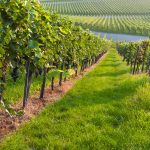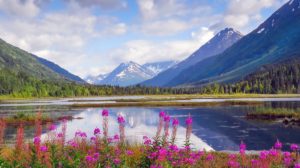Many canoeists associate real wilderness paddling with the Canadian Shield– an excellent piece of ancient rock more apparent in northern parks such as Algonquin orQuetico To the east, nevertheless, this two-billion-year-old rock likewise controls the landscape by method of a southern extension referred to as the FrontenacAxis And due to the fact that of this, Charleston Lake Provincial Park is likewise contributed to the list of the province’s prime canoe locations.
The rugged, northern character of the Charleston Lake location has actually constantly been finest matched for the pursuits of outside lovers. As far back as the 1860 s, the lake had actually ended up being a popular retreat for upper-class tourists from Ottawa, Toronto and upper New York state who discovered enjoyment in checking out the lake by cleaners, expensive sailboats or cedarstrip guide boats rowed by a single oarsman.
Present- day canoeists now appear to control the leisure scene by using a variety of lakes, rivers and creeks in the location. (CharlestonLake– Red Horse Lake– Gananoque River– Wilts Creek is the most popular weekend loop.) However, the provincial park, located on the southwest corner of Charleston Lake, does provide the very best canoeing in general, particularly when low water levels can make the prolonged paths unnavigable throughout the majority of the paddling season.
CharlestonLake Provincial Park lies northeast of Kingston and can be reached by County Road 3 from Highway 42 and Highway 15 and the Lansdowne turnoff from Highway 401.
The primary camping site preserves 238 websites, however the park likewise uses 13 interior websites arranged into clusters organized together at Bob’s Cove, Hidden Cove, Buckhorn Bay, Captain Gap, Slim Bay and Covey’sGap Each cluster has one to 3 campgrounds and can hold 6 individuals and 3 camping tents per website. There is a canoe launch and parking area at the back of the primary camping site, past the interpretive centre and 2nd beach.
It’s smart to schedule well ahead of time for the more remote websites, particularly the cluster website situated in Slim Bay, where powerboats have actually been prohibited due to the fact that the location is the just recognized nesting website for crazies in the park. (The southern part of Runnings Bay is likewise off-limits to powerboats.)
Conveniently linked to each interior website is a treking path upon which visitors can avoid to check out the location’s large selection of plants and animals. Since the Frontenac Axis is the most southern part of the Canadian Shield, the different environments that are discovered here produce what biologists call a shift zone. Here, a big choice of plants and animals happen either beyond the regular southern or northern level of their variety, and Charleston Lake has a few of the rarest discovers in the province. Rooted along a narrow valley in Tallow Rock Bay, along with a southern part of Slim Bay, is a collection of snazzy orchis growing at the base of fully grown hemlock. Pitch pine, among Canada’s scarcest tree types, is likewise discovered in great concentration on the quartzite ridge north of DuckBay Charleston Lake’s informal mascot, the black rat snake– a safe however good-sized tree-climbing constrictor that, when shocked, will flatten out its neck and vibrate its tail– is likewise discovered here.
Three primary archeological websites that you can quickly go to by canoe consist of the pictographs in Slim Bay and the mystical rock shelters discovered at Jackson’s Point and GordonRock The rock paintings have actually ended up being harder to identify throughout the years, however the rock shelters, believed to be utilized by primitive guy, are rather visible to canoeists travelling the coastline. The caverns were formed when weaker layers of quartzite pebbles collapsed underneath the more resistant sandstone.
These biological and cultural treasures are plentiful in Charleston Lake, however it’s still the beautiful appeal of the rugged landscape, just like the land more to the north, that has actually affected both the natural and human history of the location which will continue to draw canoeists to this semi-wilderness location of easternOntario Believe me, it deserves a go to!
Source link .























